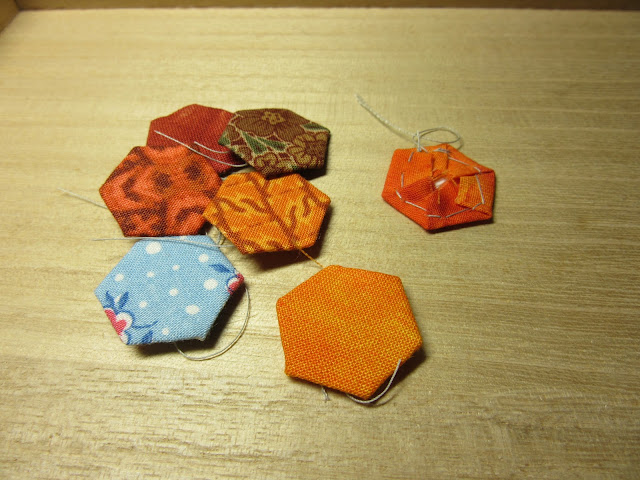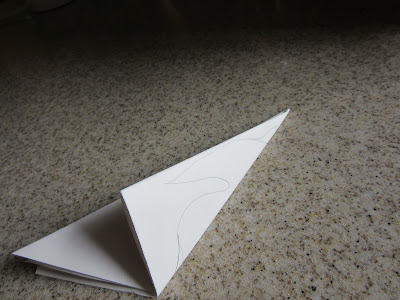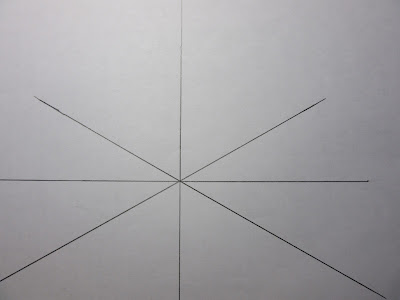Pages
Thursday, 31 August 2023
What's in a Quilt - The Green Man - Part 5: Hexagon
Wednesday, 30 August 2023
WIPW - Trudging On
Work In Progress Wednesday report.
Mandala
I only added a few stitches to the lines of #223 Romanian Macrame Petal Stitch. These lines need to be longer before I can work out where to put the circular edge.
Sunday Stitch School Stitch Sampler
Here I added three stitches: #260 Laced Mountmellick Stitch (green and red metallic), #256 Quill Stitch (variegated thread) and #242 Double Wheatear Stitch (wheat coloured ochre).
Sunday, 27 August 2023
Sunday Stitch School - Lesson 262: Star of David
Now that I know how to make a hexagon or six-pointed star template, it is time to learn the Star of David Stitch.
Have a look at Needle 'n Thread.
Tighten the fabric in a hoop and
mark the six tips of the star on the fabric.
and go back and out at the second mark.
Continue Back Stitching.
Keep this mantra in your head:
Two forwards and one back.
the previous lines as indicated by the red arrows.
Homework: Add stars on these samplers.
Friday, 25 August 2023
Friday Homework: Preparatory Lesson - Template Making
I didn't set a homework task for today. However, I needed to make a birthday card and decided to use the hexagon shape to make a Grandmother's Flower Garden design.
So a small hexagon template was drawn and cut out, and seven tiny hexagons were prepared like this:
Thursday, 24 August 2023
What's In A Quilt - The Green Man - Part: 4 Hawaiian Quilt
Last time we looked at reverse appliqué. Today I will show you a block made in a technique from Hawaii, where reverse appliqué is a must.
Hawaiian quilt patterns are unique in that they mainly feature leaves and flowers. The whole top layer is folded and cut, in the way we used to make paper snowflakes in our childhood. Also, most quilts are echo quilted.
A folding tutorial for making the pattern:
As you can see I used a sheet of paper. For a real quilt, you obviously use the top fabric and fold it until you can cut it. Care and pins are needed to keep the folds of fabric stable while cutting.
Read more:
Wednesday, 23 August 2023
WIPW - A Finish & A Start + A Grandmother's Flower Garden Birthday Card
It's been a busy week to report on here at Work In Progress Wednesday.
Mandala
I completed the work I started last week.
Sunday Stitch School Stitch Sampler
I added the following stitches:
#250 Danish Knot Chain Stitch (mint green), #247 Scallop Blanket Stitch (orange/yellow variegated) and #141 Feathered Zig-zag Chain Stitch (light green/yellow variegated)
Sunday Stitch School Reference Chart
I pressed on all labels and stitched them down by machine with invisible stitching (monofilament nylon). The labels are secure and won't fall off. There is no need to worry as I pull this reference chart out time and again to look for stitches.
Birthday Card
One of my aunts will soon be 95 and I wanted to make her a cheerful and bright card. Why not use the hexagon shape and the Grandmother's Flower Garden pattern? More on the construction work in a later blogpost.
Sunday, 20 August 2023
Sunday Stitch School: Preparatory Lesson - Template Making
Hi, and welcome to Sunday Stitch School. Today we won't be learning a new stitch! Instead, we will be preparing for next week's stitch, which is a six-pointed star.
In the past, I have made a number of hexagon templates from scratch while carefully looking at the instructions, but after a few weeks, I always seem to forget the technique.
Therefore I wanted to record the process, as this will help me make both hexagons and stars with six tips. Once this is published on the blog, I can always go back and find the instructions whenever I need to.
































































